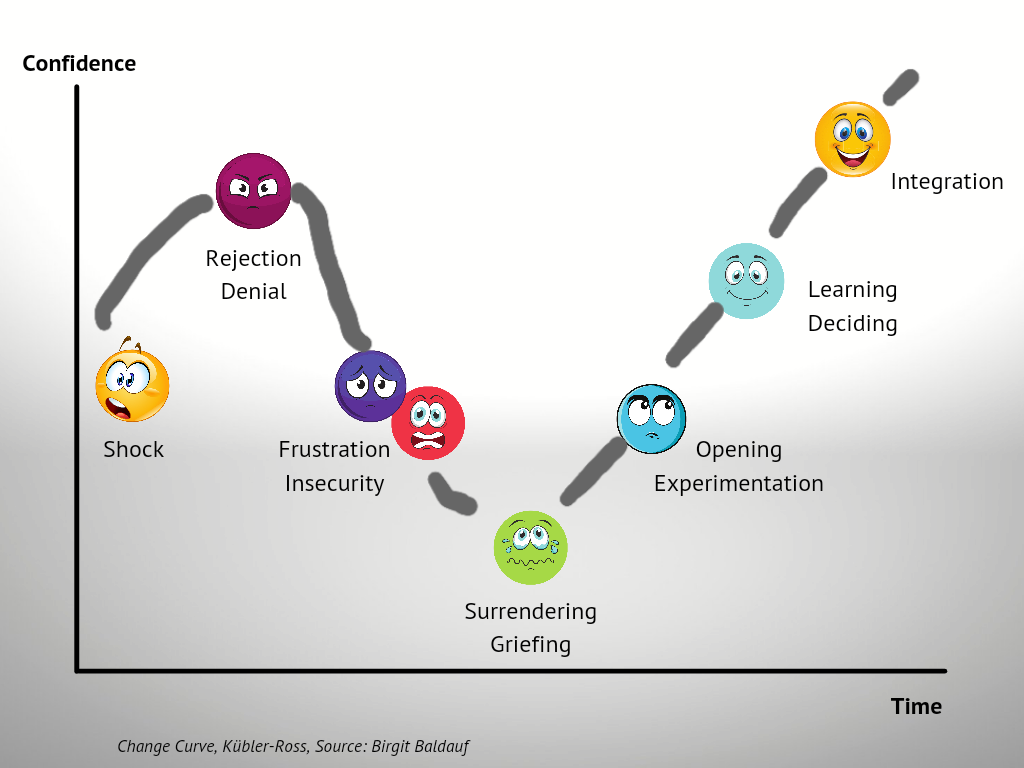
“Boooooooooooring!” – thinks your inner elephant, i.e. your subconscious, if you do not choose the right level of challenge on the way to the desired change.
Just as the unattainable or forbidden has a special attraction for us (see the article “Kill the ban”), we quickly lose interest when things are too easy or we are sure that we have everything under control.
This can happen in different ways on the way to your desired change:
- You set goals that are too small – You don’t want to stress yourself and choose small steps on the way to your goal that you definitely know you can do. However, this way you don’t really feel a sense of achievement, because you knew beforehand that it would work out and you didn’t really have to make an effort. Your elephant lacks, so to speak, the “kick and stimulus” in the matter. Because he really gets the desire through the happiness hormone Dopamine, which is released when you have mastered a hurdle! You’ll find just the right amount of challenge if you take your last performance as a foundation and demand a little more of yourself next time. So much more that you just manage it. Change one thing to have a new challenge. For example, if you ran 6 km last time, you can aim for 6.5 km this time – or 6 km again, but in a faster pace. Or you can choose a different route for the 6 km – for example, one that includes stairs, gentle inclines, or cross-country running. By the way, choosing the next development step in a way that the demands are slightly above your abilities is also the best way to get into the flow (more about this in one of the next articles – stay tuned ;-)).
- You always do the same – I like to call it “routine without comfort zone”. Your inner elephant is specialized in economizing. If you e.g. always choose the same round for jogging at the same time, your body will have already calculated after a few units how much energy has to be provided for it and will also provide it exactly – but not more. The round will then become easier and easier for you, “you just run it so you can check it off your list” and at some point it will be as integrated into your energy balance as brushing your teeth is into your daily hygiene. It’s no longer a special requirement – so it won’t push any further development. Again, the magic here is in variety. Different time, different day of the week, different route, different shoes … maybe even different sport? For example, if you want to integrate running as a regular sport in your life, it is equally important to stabilize your core to improve your running style. So why not weave in some weight training exercises with your own body weight? (Plank, situps, pushups). Routine remains important -but maybe we’d better call it consistency. Keep at it – but make sure it’s varied and fun and get out of your comfort zone!
Even if I have chosen an example from sports – the phenomenon of underchallenge and the two reasons for it can also be transferred to other areas.
For example, if you want to acquire knowledge about a new subject or learn a new language, you can always cram vocabulary at the same time and always practice only those words you already know or … look for other opportunities, such as a language tandem (contact with a native speaker in the language you want to learn), watch TV shows or movies in the foreign language, watch YouTube videos, buy a magazine with a topic that interests you in the foreign language, etc.
Whatever change you apply it to – don’t forget dopamine for Dumbo!
Don’t bore your elephant!
Here’s to an exciting week!
Yours, Birgit










